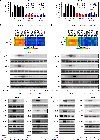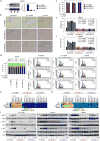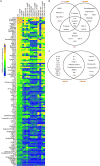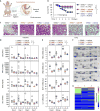ALK is a therapeutic target for lethal sepsis
- PMID: 29046432
- PMCID: PMC5737927
- DOI: 10.1126/scitranslmed.aan5689
ALK is a therapeutic target for lethal sepsis
Erratum in
-
Erratum for the Research Article "ALK is a therapeutic target for lethal sepsis" by L. Zeng et al.Sci Transl Med. 2025 Jun 25;17(804):eadz3926. doi: 10.1126/scitranslmed.adz3926. Epub 2025 Jun 25. Sci Transl Med. 2025. PMID: 40561003 No abstract available.
Abstract
Sepsis, a life-threatening organ dysfunction caused by infection, is a major public health concern with limited therapeutic options. We provide evidence to support a role for anaplastic lymphoma kinase (ALK), a tumor-associated receptor tyrosine kinase, in the regulation of innate immunity during lethal sepsis. The genetic disruption of ALK expression diminishes the stimulator of interferon genes (STING)-mediated host immune response to cyclic dinucleotides in monocytes and macrophages. Mechanistically, ALK directly interacts with epidermal growth factor receptor (EGFR) to trigger serine-threonine protein kinase AKT phosphorylation and activate interferon regulatory factor 3 (IRF3) and nuclear factor κB (NF-κB) signaling pathways, enabling STING-dependent rigorous inflammatory responses. Moreover, pharmacological or genetic inhibition of the ALK-STING pathway confers protection against lethal endotoxemia and sepsis in mice. The ALK pathway is up-regulated in patients with sepsis. These findings uncover a key role for ALK in modulating the inflammatory signaling pathway and shed light on the development of ALK-targeting therapeutics for lethal systemic inflammatory disorders.
Copyright © 2017 The Authors, some rights reserved; exclusive licensee American Association for the Advancement of Science. No claim to original U.S. Government Works.
Conflict of interest statement
Figures








Comment in
-
Sepsis: Stalking a new target.Nat Rev Drug Discov. 2017 Dec;16(12):825. doi: 10.1038/nrd.2017.238. Epub 2017 Nov 17. Nat Rev Drug Discov. 2017. PMID: 29147029 No abstract available.
-
Comment on "ALK is a therapeutic target for lethal sepsis".Sci Transl Med. 2018 Dec 12;10(471):eaar4321. doi: 10.1126/scitranslmed.aar4321. Sci Transl Med. 2018. PMID: 30541790 Free PMC article.
-
Response to comment on "ALK is a therapeutic target for lethal sepsis".Sci Transl Med. 2018 Dec 12;10(471):eaas9817. doi: 10.1126/scitranslmed.aas9817. Sci Transl Med. 2018. PMID: 30541792
References
-
- Angus DC, van der Poll T. Severe sepsis and septic shock. N Engl J Med. 2013;369:840–851. - PubMed
-
- Singer M, Deutschman CS, Seymour CW, Shankar-Hari M, Annane D, Bauer M, Bellomo R, Bernard GR, Chiche JD, Coopersmith CM, Hotchkiss RS, Levy MM, Marshall JC, Martin GS, Opal SM, Rubenfeld GD, van der Poll T, Vincent JL, Angus DC. The Third International Consensus Definitions for Sepsis and Septic Shock (Sepsis-3) JAMA. 2016;315:801–810. - PMC - PubMed
-
- Broz P, Monack DM. Newly described pattern recognition receptors team up against intracellular pathogens. Nat Rev Immunol. 2013;13:551–565. - PubMed
MeSH terms
Substances
Grants and funding
LinkOut - more resources
Full Text Sources
Other Literature Sources
Medical
Molecular Biology Databases
Research Materials
Miscellaneous

